How to Find the Common Thread in A Varied Job History
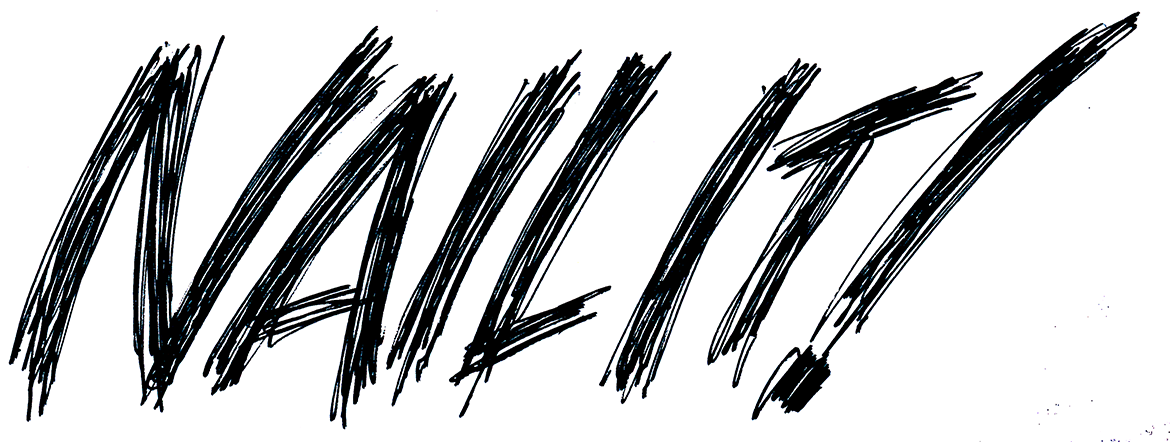
If you’re searching for your next gig, pull out your resume and check how it answers this question: When did your passion for what you do really begin?
A Trip Down Your Resume’s Memory Lane
If your resume is like just about every one I’ve seen, you’ve got your career trajectory laid out from your current gig back into the past. Scan down through the “Experience” section (or whatever heading you use), get to the bottom, and you’ll see that first job listed there, right? In most cases, you’ll be looking at yourself in your mid-20s in an entry- or associate-level position, possibly with a job title like “production assistant,” “junior account executive,” or “associate editor.”
A passionate career starts very early and ends in death.
And probably, when you’re talking about your work life — whether you’re interviewing for a new job or talking with your friends — you start the narrative off with this early gig. You might say, “My first job out of college was….” or “I waited tables for a while but then I got a real job.”
But you can look at your career arc in a very different way. I’m going to propose that you started your career way before anyone ever wrote you a check. Instead, I think your career began when you fell in love with doing something — a “something” that remains a vital, core passion to this day.
Why is this change of perspective important? It isn’t just about finding purpose and meaning in what you do (as important as that is for all of us) — it’s a much more material concern. I see dozens of coaching clients a year in danger of missing out on earning what they’re worth because they think a career is something that starts around age 26 and ends when their Social Security benefits kick in. For me, a passionate career starts very early and ends in death. Personally, I want to work with people who are so in love with what they do that they can’t imagine ever stopping. And I want to see them get paid accordingly.
Believe it or not, so do most employers.
How did it start?
Sometimes, the love of craft begins with love, as it did for Samantha Sleeper, a fashion designer and founder of Swan Bridesmaid, who remembers looking through her beloved mother’s magazines as a child. “I was 8 or 9, flipping through the pages of Vogue and tucking my own sketches between the pages of the magazine as if those were additional editorial pages.”
But in my experience, a lot of passionate careers begin from a darker place.
Trauma
Doug Fast, who designed the Starbucks logo and its revisions over the years, remembers being sent away to live with his aunt when his mother couldn’t support him. He was in the first grade and still remembers drawing a volcano erupting dramatically. “I used red and yellow crayons,” Fast recalls. “It was the fire that I made that got the most comment from the teacher and the class.”
Escape
I was in foster homes and found myself poring over a Currier and Ives book of sailing ships, imagining the power of those great sails to carry me away. It was during that time that my teacher praised a drawing I made of Columbus’ ships. (You can read more about my early life and how it helped form my passion for design on my blog in the Fear & Change article series.)
Loneliness
Little Men director Ira Sachs, whose work was recently given a rare midlife retrospective at the Museum of Modern Art in New York, remembers a profoundly lonely three-month stretch when all he did was go to movies — 197 of them. He was a student in Paris, he recalls, and “it was there — more than any other moment, job, or opportunity — that I knew what I wanted to do with my life. I felt both comfort and inspiration watching movies, and when I face challenges today, I find that nothing gets me out of them quicker than going to see a good movie.”
These experiences are sometimes painful, but all are memorable. And for many, they’re the starting point for some kind of activity — done passionately and for its own sake — that later emerge as a skill, talent or driving force that propels an entire career.
If you’re having trouble finding the source of your delight in your work, consider these prompts:
Beginning in the present, what do you love most about what you do now?
Even if you’re waiting tables, what is the highlight of your day? I have known a number of stellar salespeople who loved waiting tables for the customer interaction and the satisfying feedback loop of tips (also known as “sales commissions”).
When do you first remember learning that the activity you now love was something you could be paid to do?
A successful copywriter I’ve coached remembers the jolt he got as a small child realizing that a person had written the words that filled his beloved books–and that he could be a person who did so as well.
Is there something sensory your passion centers around? If so, what are your earliest sense memories?
Sleeper, the designer, remembers the first time she touched charmeuse.
Sharing That Passion
The dimensions of a resume are sadly inadequate for expressing your childhood delight at touching charmeuse. You have to consider a resume as if it were a kind of better-than-average skeleton key, filed to unlock a variety of doors.
However, you can and should use some resume space to express how your devotion to your chosen craft began. Rocket Fuel CEO Randy Wootton says, “I look right away at the ‘personal’ section of the resume and then ask them what their passion has been throughout their lives. I want to hear about how this passion has motivated them and shown up in the choices they’ve made.”
Most employers worth working for do something similar. They try to see beyond the skills and qualifications to understand what drives a candidate. It takes real, devoted energy to build a great company, and that takes driven, passionate builders who know how they got that way.
A version of this article was published on Fast Company.
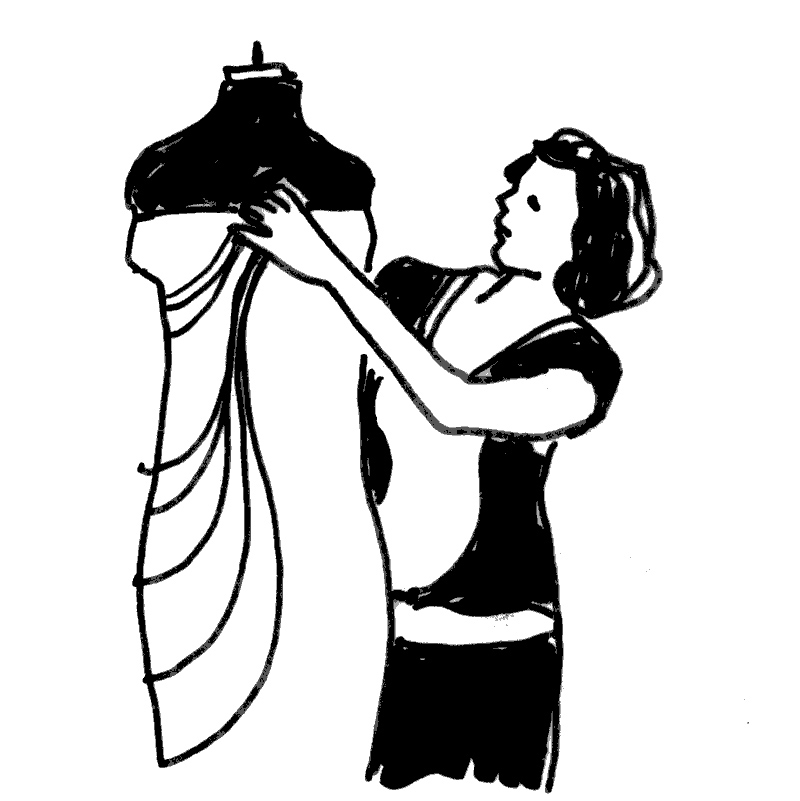
To The Point
A short list of people who are nailing it right now.
Karla Burgos — The social media strategist’s former employer 180LA credits her with the inspiration for their campaign with BOOST Mobile’s voting access project, which just won two Grand Prix at Cannes Lions festival. h/t Adweek.
Debbie Millman — PRINT Magazine’s Editorial & Creative Director offers her thoughts (and illustrations) about the democratization of design in Designers on Design at 99U.
Federico Rios Escobar — Photographer shares the fascinating behind the scenes of capturing images of Galápagos Tortoise in “How I Got the Shot.”
Need more inspiration?
Get Ted’s quick tip for answering questions about salary history.
What’s Your Story?
As always, I look forward to your comments and questions. Feel free to comment below or email me directly. And if you have a story to share about how you nailed it, please send it my way — if we use it in the weekly mail, you’ll receive a free one-hour coaching session with me.

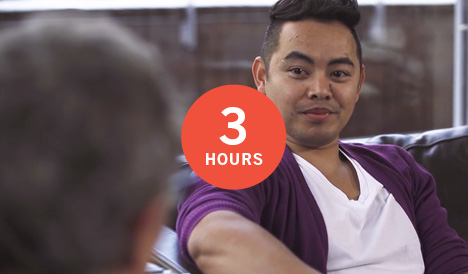
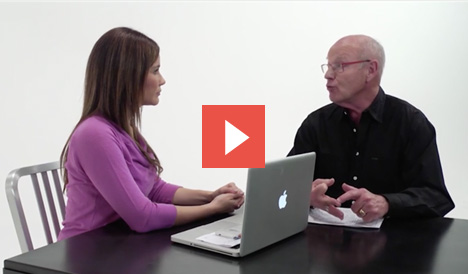
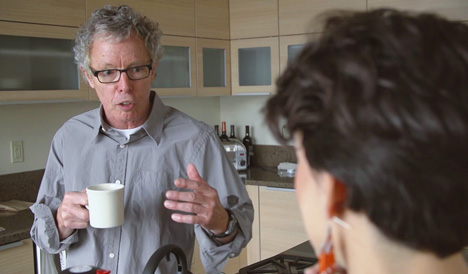
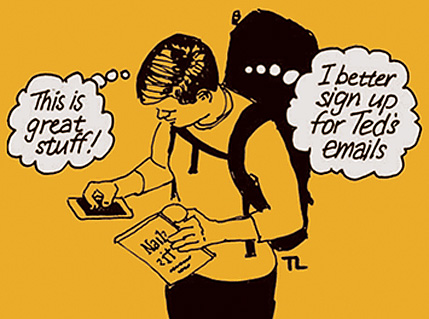
2 Comments
Reading through the “what inspired” moments, a clear memory from my single digit years surfaced.
I was in the car with my family had a palm-sized notebook with pages that flipped over the top. I was joining the conversation but also taking short notes. After 15 minutes of doing this, I announced: “I know how we got to this topic.” It’s unlikely I used the word topic but you follow me. I then read my notes to rewind the path of the conversation, naming the ideas, feedback, and questions that shaped it. I was so proud of myself for seeing the connections between point A and point K.
The majority of my career has been about making those connections, from studying journalism to marketing the news stories, I love learning new ideas and making connections between seemingly disparate ideas. It’s creative, engaging, and helps people see their world differently. That’s what I want to do for a living.
Cherylynne,
The clarity of your story matches my own and stories that many other creatives have shared. Thanks!
Ted